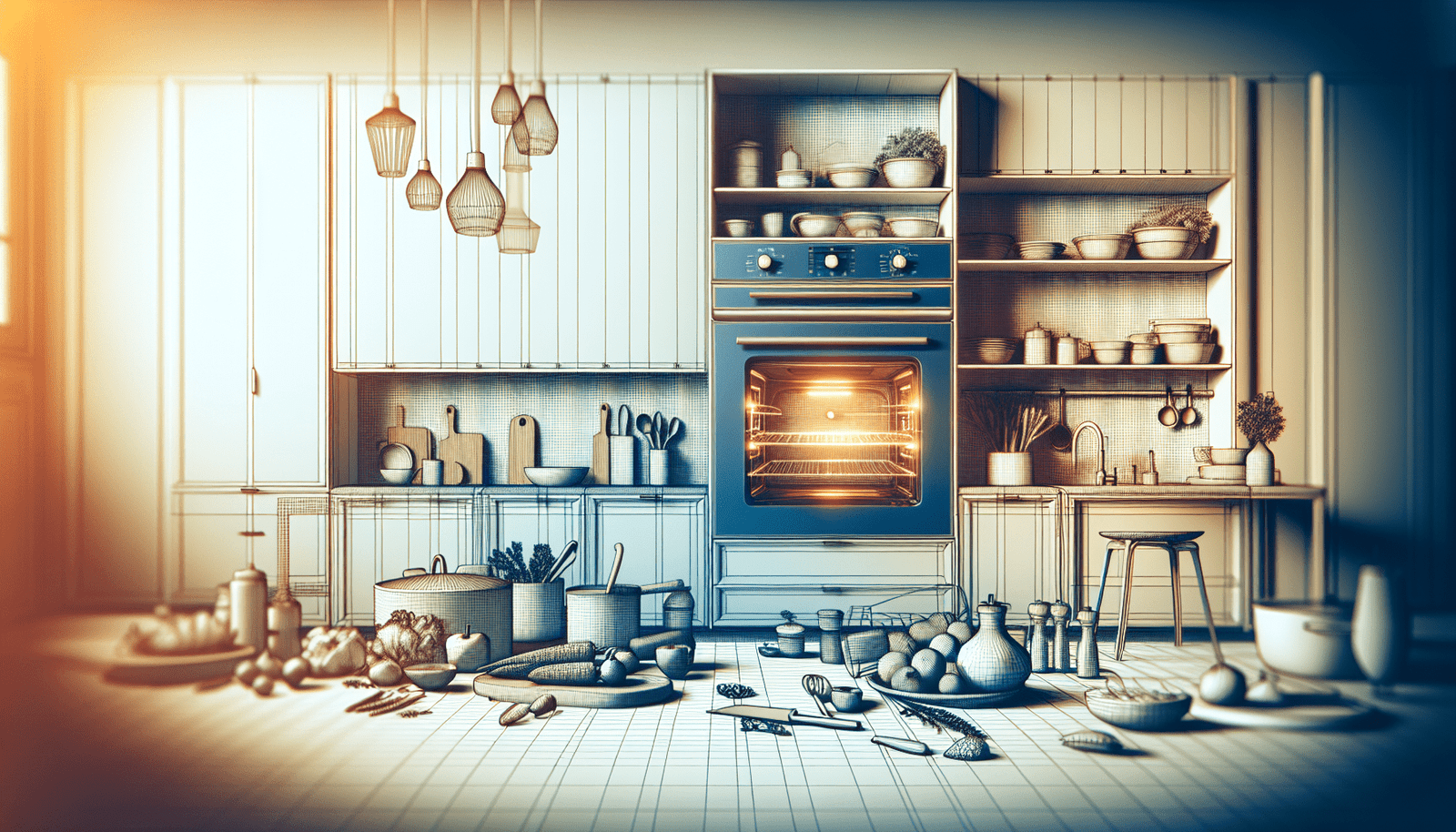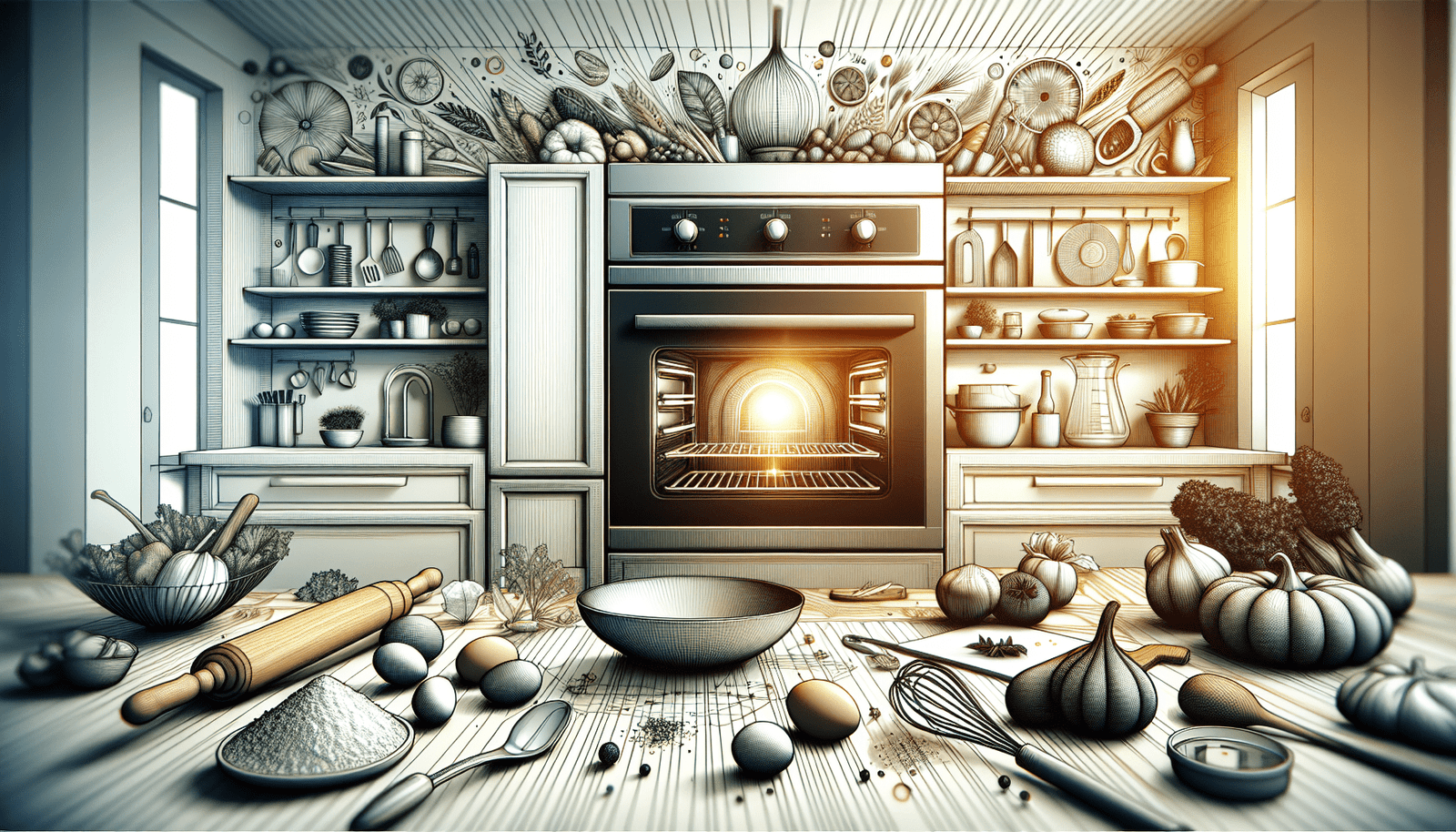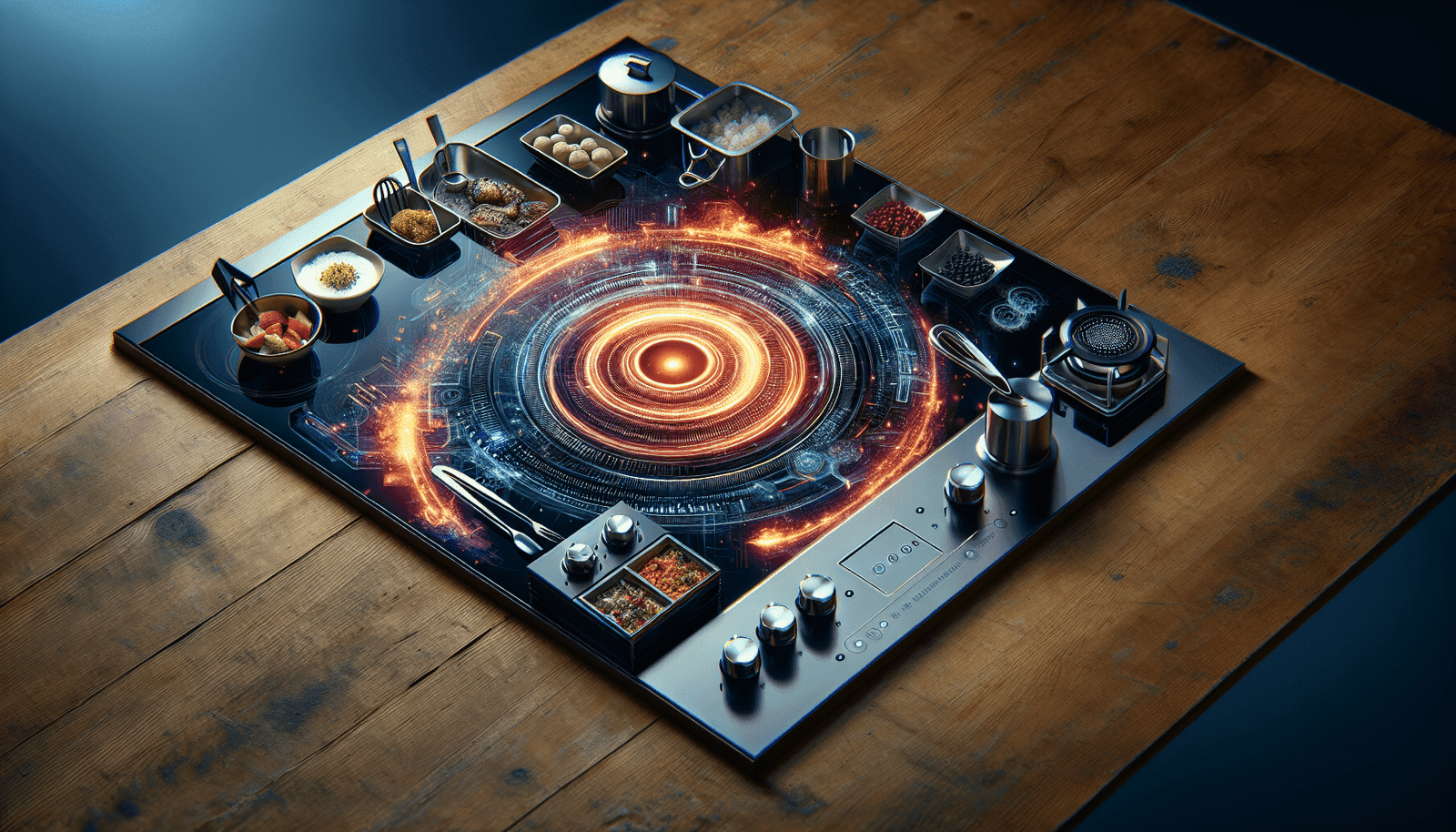Imagine your kitchen, the place where flavor meets family and friends, and at the heart of it all lies the oven, a true bastion of culinary creativity. “Ovens: The Heart of the Kitchen” embarks on a captivating exploration into this indispensable appliance, shedding light on its pivotal role in both residential and commercial settings. As part of Cooking Appliance World’s commitment to enhancing your culinary experience, this article not only offers a treasure trove of expert reviews on the latest oven technologies but also ensures you’re equipped with the knowledge to choose appliances that align perfectly with your cooking ambitions. With a penchant for elevating kitchen routines and professional endeavors alike, discover how the right oven can revolutionize your cooking and make every meal a masterpiece.

The Evolution of the Oven
From Open Fires to Modern Electric and Gas Ovens
The journey from open fires to the sophisticated electric and gas ovens you see today is a fascinating tale of human innovation. Initially, cooking was done over open fires, with the heat source being directly under the food. This method was pretty challenging as controlling the temperature was almost impossible. Over time, as human civilization progressed, so did the technology around cooking. The creation of the first simple ovens, which were essentially enclosed spaces where fire could be built and controlled better, marked a significant leap in cooking technology. Fast forward to today, and you have electric and gas ovens that offer precise temperature controls and a multitude of cooking modes, truly transforming how you cook.
The Impact of Technology on Oven Design and Functionality
Technology has drastically reshaped oven design and functionality, making them more than just a box to heat your food. Modern ovens now incorporate sophisticated technology that allows for even heat distribution, precise temperature controls, and timed cooking. Features like convection fans and steam injection are direct results of technological innovation, aimed at improving your cooking results. Moreover, the introduction of smart technology has brought ovens into the digital age, enabling you to control your oven via smartphone apps and even suggesting recipes.
Comparative Analysis: Traditional vs. Modern Ovens
When comparing traditional ovens to modern ones, the differences in efficiency, convenience, and versatility are striking. Traditional ovens, while nostalgic and maybe preferred by some for specific dishes, lack the precise temperature control and even heating capabilities of their modern counterparts. Modern ovens come with features like programmable settings, self-cleaning functions, and specialized cooking modes for baking, roasting, and broiling, offering you a level of convenience and perfection in cooking that traditional ovens cannot match.
Types of Ovens
Conventional Ovens: Gas and Electric
Conventional ovens, both gas and electric, are the most commonly found in homes. Gas ovens use a gas burner at the base, which can provide immediate heat and excellent moisture retention, making them ideal for roasting. Electric ovens, on the other hand, use electric coils and tend to provide a drier, more evenly distributed heat, perfect for baking. Each type has its fans and specific advantages, depending on the cooking task at hand.
Convection Ovens: How They Work
Convection ovens take the regular oven up a notch by using a fan and exhaust system to circulate hot air around the food. This results in faster cooking times and more even heat distribution, reducing the likelihood of unevenly cooked dishes. These ovens are fantastic for baking cookies or roasting meats where you want a crispy exterior and uniformly cooked interior.
Toaster Ovens and Countertop Alternatives
Toaster ovens and other countertop alternatives offer convenience and efficiency, especially for small kitchens or quick cooking tasks. These compact devices can perform a variety of cooking functions including toasting, baking, and broiling. They’re perfect for someone with limited space or for those times you don’t want to heat up your larger oven for a small meal or snack.
Specialty Ovens: Steam Ovens, Microwave Ovens, and More
Specialty ovens, like steam and microwave ovens, cater to specific cooking methods. Steam ovens use steam moisture to cook food, preserving nutrients and flavors, and making them ideal for health-conscious individuals. Microwave ovens use electromagnetic radiation to heat water molecules in food, speeding up cooking times significantly but sometimes at the cost of texture and flavor.
Features of Modern Ovens
Smart Technology: WiFi-enabled and Programmable Options
The introduction of smart technology in ovens has been a game-changer. WiFi-enabled and programmable options mean you can start preheating your oven while you’re still at the grocery store or monitor the cooking progress from another room, making the cooking process more flexible and convenient than ever before.
Self-Cleaning Mechanisms: Pros and Cons
Modern ovens often come with self-cleaning mechanisms, which can be a huge time saver. However, these features are not without their drawbacks. High temperatures used in pyrolytic cleaning can produce unpleasant smells and may occasionally cause wear on your oven parts over time. Catalytic liners offer a less intense alternative, breaking down grease and dirt at regular cooking temperatures.
Temperature Precision and Control
One of the most significant advantages of modern ovens is their ability to maintain precise temperatures. This precision ensures that your recipes turn out exactly as expected, every time. Digital controls allow for minute adjustments and can save settings for your favorite dishes, streamlining your cooking process.
Safety Features: Locks, Alarms, and Automatic Shut-off
Safety has become a paramount feature in modern ovens. Child safety locks, alarms for when the oven is left on, and automatic shut-off features help to prevent accidents in the kitchen, making modern ovens safer for households with children or for those who might be forgetful.
The Role of Ovens in Culinary Arts
Baking vs. Roasting: Understanding the Differences
Understanding the differences between baking and roasting is crucial for culinary success. Baking is primarily used for bread, pastries, and cakes and requires precise temperatures to encourage rising and browning. Roasting is suited for meats and vegetables, using higher temperatures to create a crispy exterior while keeping the interior moist and tender.
The Importance of Even Heat Distribution
Even heat distribution is critical in cooking, ensuring that all parts of your dish are cooked to perfection. Uneven heating can result in parts that are overcooked or undercooked, affecting texture and flavor. This is where modern ovens shine, with features designed to distribute heat as evenly as possible.
Specialty Baking: Bread, Pastries, and Pizzas
Specialty baking, such as preparing bread, pastries, and pizzas, requires specific temperature and humidity conditions. Some modern ovens offer specialized settings or accessories like baking stones and steam functions to help you achieve the perfect crust and crumb, enabling you to produce bakery-quality results at home.
Culinary Techniques: Broiling, Baking, and Slow Cooking
Modern ovens are incredibly versatile, allowing you to broil, bake, and even slow cook. Broiling is great for quickly cooking meats or vegetables with direct, high heat, while baking is suited for cakes, bread, and casseroles. Some ovens even offer slow cooking functions, proving their versatility in handling various culinary techniques.

Choosing the Right Oven for Your Kitchen
Size and Capacity: Matching Your Cooking Needs
When choosing an oven, consider the size and capacity that best matches your cooking needs. A larger family or someone who entertains often may benefit from a larger oven or even double ovens, while someone with a smaller household might prefer a compact or countertop model.
Energy Efficiency: Gas vs. Electric Considerations
Energy efficiency is an important factor in choosing an oven. Generally, electric ovens are more energy-efficient and may have a lower environmental impact, but gas ovens can heat up faster and offer more precise temperature control. Consider your priorities and choose accordingly.
Style and Aesthetics: Fitting Your Kitchen’s Theme
Ovens come in various styles and aesthetics, from modern stainless steel to retro designs. Choose an oven that fits your kitchen’s theme and your personal style. Remember, your oven can be a focal point in your kitchen, so choose one that you’ll be happy to see every day.
Price Range: Budget to High-End Models
Price range is a crucial consideration when choosing an oven. Budget-friendly options can still offer great features and performance, while high-end models may provide luxurious extras like smart technology and designer aesthetics. Decide on your budget early in the shopping process to help narrow down your options.
Installation and Maintenance
Professional Installation vs. DIY: What to Consider
When it comes to installation, you may be tempted to save money with a DIY approach. However, remember that ovens, especially gas models, can be complicated and potentially dangerous if not installed correctly. Consider professional installation for peace of mind and to ensure your oven’s warranty remains valid.
Routine Maintenance: Tips and Tricks
To keep your oven in top shape, routine maintenance is key. This includes regularly cleaning the interior, checking and replacing worn seals, and running self-cleaning cycles if available. Keeping your oven clean and well-maintained can significantly extend its life and improve its performance.
Troubleshooting Common Oven Problems
Familiarizing yourself with common oven problems and their solutions can save you time and money. Issues like uneven heating, malfunctioning doors, or irregular temperatures can often be solved with basic troubleshooting, such as checking for blockages, recalibrating the temperature, or replacing seals.
When to Repair vs. When to Replace
Knowing when to repair your oven and when to replace it can be tricky. If your oven is relatively new and the cost of repair is low, repairing it may be the best choice. However, if your oven is old, inefficient, or the repairs are costly, it could be more economical to replace it.
Ovens and Health: Cooking for Wellness
Healthy Cooking Techniques Using Your Oven
Your oven can be a tool for healthy cooking. Techniques like roasting, baking, and broiling can help reduce fat and calorie content in meals without sacrificing flavor. Experiment with herbs, spices, and healthy marinades to enhance the natural flavors of your food.
Reducing Fat and Calories in Oven-cooked Meals
By choosing lean cuts of meat, using minimal oil, and incorporating lots of vegetables, you can reduce fat and calories in your oven-cooked meals. Making smart food choices and utilizing your oven’s capabilities can lead you to a healthier lifestyle.
The Benefits of Home-Cooked Meals
Home-cooked meals, prepared with your oven, offer numerous benefits. Not only can they be healthier than restaurant or processed foods, but cooking at home allows you to control ingredients, portions, and cooking methods, contributing to a better overall diet.
Avoiding Hazards: Cookware and Material Safety
When using your oven, it’s important to consider cookware and material safety. Use cookware that is safe for your specific type of oven, and avoid materials that can release harmful chemicals at high temperatures. Always follow manufacturer recommendations to ensure safe cooking.
The Environmental Impact of Ovens
Energy Consumption and Efficiency
Ovens, particularly older models, can be significant energy consumers in your home. Opting for an energy-efficient model can help reduce your carbon footprint and save on energy bills. Look for energy ratings and consider efficient technologies like convection or induction.
Sustainable Cooking Practices
Adopting sustainable cooking practices can also help minimize your environmental impact. This includes using your oven efficiently, such as baking multiple items at once, and turning off the oven a few minutes before your food is done to utilize residual heat.
The Lifetime of an Oven and its Environmental Footprint
The environmental footprint of an oven includes its manufacturing, usage, and disposal. Choosing durable, repairable models can extend the lifetime of your oven, reducing the need for frequent replacements and therefore its overall environmental impact.
Innovations in Oven Technology
Smart Ovens: Revolutionizing the Way We Cook
Smart ovens are revolutionizing the way we cook. They offer features like remote control, automated cooking programs, and integrations with other smart home devices, making cooking more convenient and efficient than ever before.
Eco-friendly Models: Reducing Carbon Emissions
Eco-friendly ovens are designed to reduce carbon emissions by being more energy-efficient and using sustainable or recycled materials. Investing in these models can help mitigate climate change and reduce your household’s carbon footprint.
Future Trends: What’s Next for Oven Technology?
Looking ahead, the future of oven technology is promising and exciting. Innovations like AI-driven cooking assistance, further integration with smart home ecosystems, and advancements in energy efficiency and sustainability are expected to elevate the cooking experience to new heights.
Tips and Tricks for Oven Use
Maximizing Your Oven’s Efficiency
To maximize your oven’s efficiency, regularly clean the interior and the door glass, preheat only when necessary, and try to cook multiple items simultaneously. Also, using the correct rack position can significantly affect cooking times and energy usage.
Creative Uses Beyond Baking and Roasting
Your oven can do much more than just bake and roast. Try using it for dehydrating fruits, proofing bread dough, or even making homemade yogurt. The possibilities are vast, and experimenting can lead to delicious results.
Maintenance Hacks to Keep Your Oven in Top Shape
Simple maintenance hacks can keep your oven in top shape for years. For instance, removing and cleaning oven racks regularly, using oven liners to catch spills, and wiping spills immediately after the oven cools can prevent buildup and odors.
The Art of Temperature Management
Mastering the art of temperature management is key to oven use. Understand that some dishes benefit from starting in a cold oven, while others need a preheated environment. Familiarize yourself with your oven’s particular quirks, as actual temperatures can vary from the settings.
Ovens truly are the heart of the kitchen, and with the right knowledge and care, they can transform your cooking from routine to remarkable. Whether you’re a novice home cook or an experienced chef, understanding your oven and making the most of its capabilities can elevate your culinary creations to new heights. Happy cooking!


